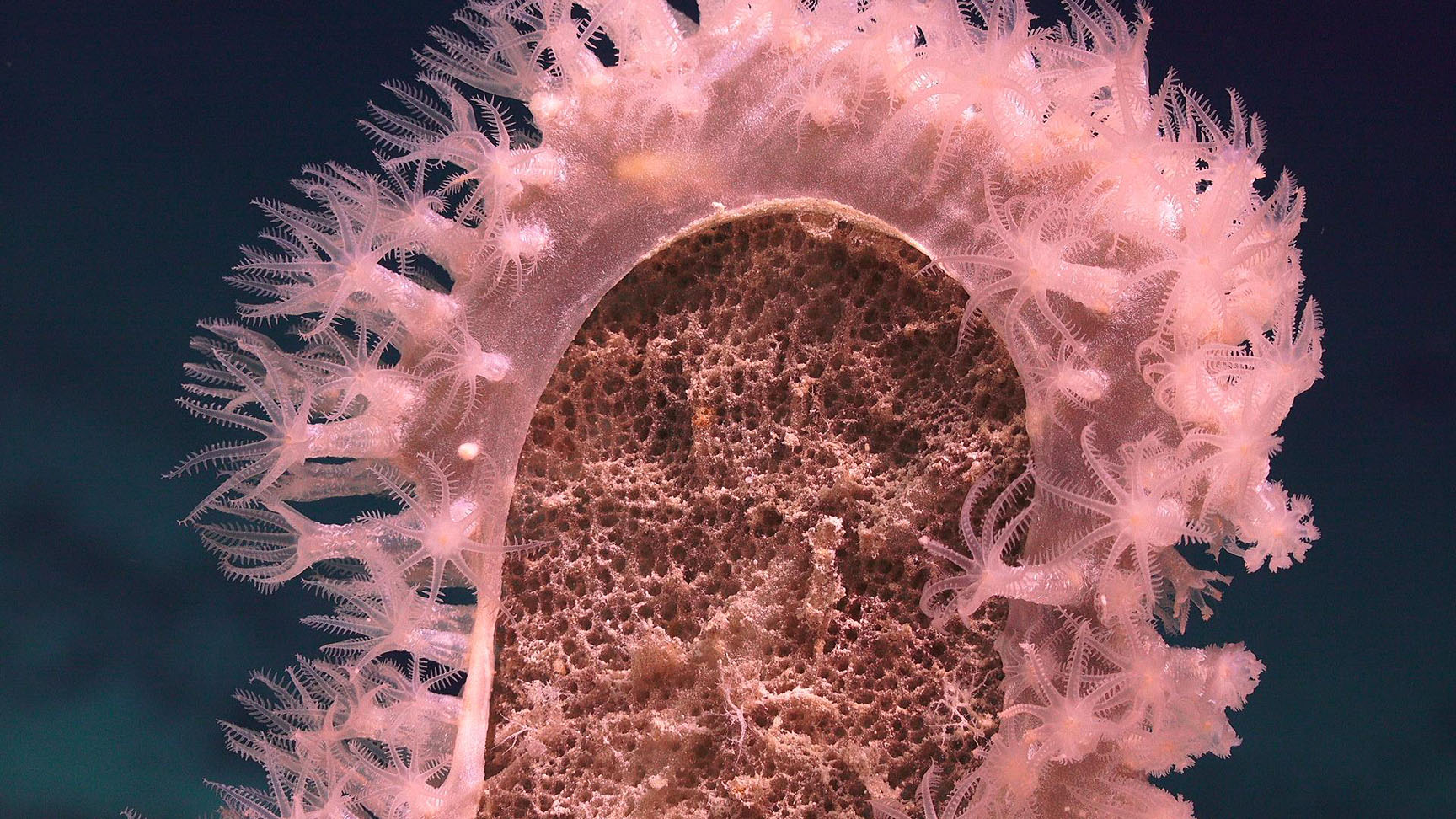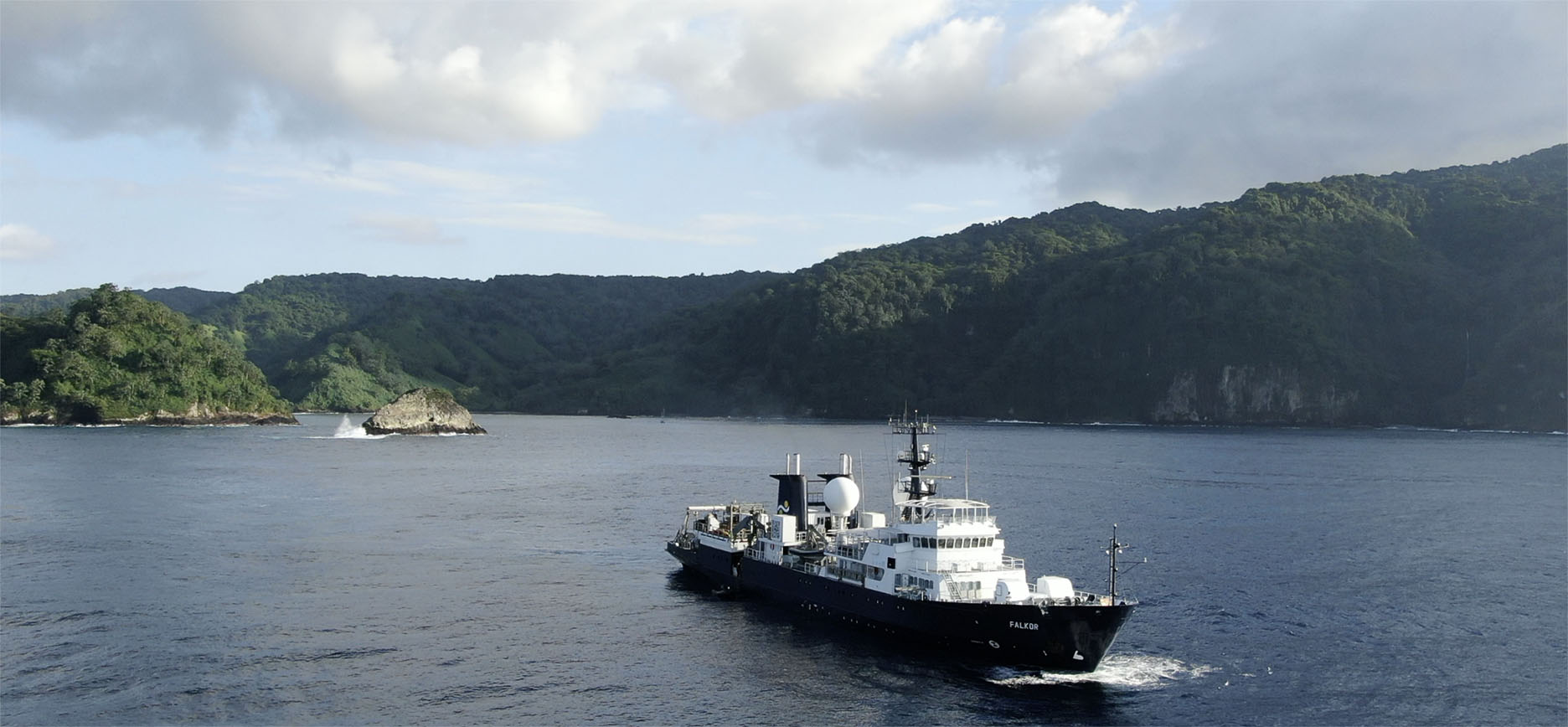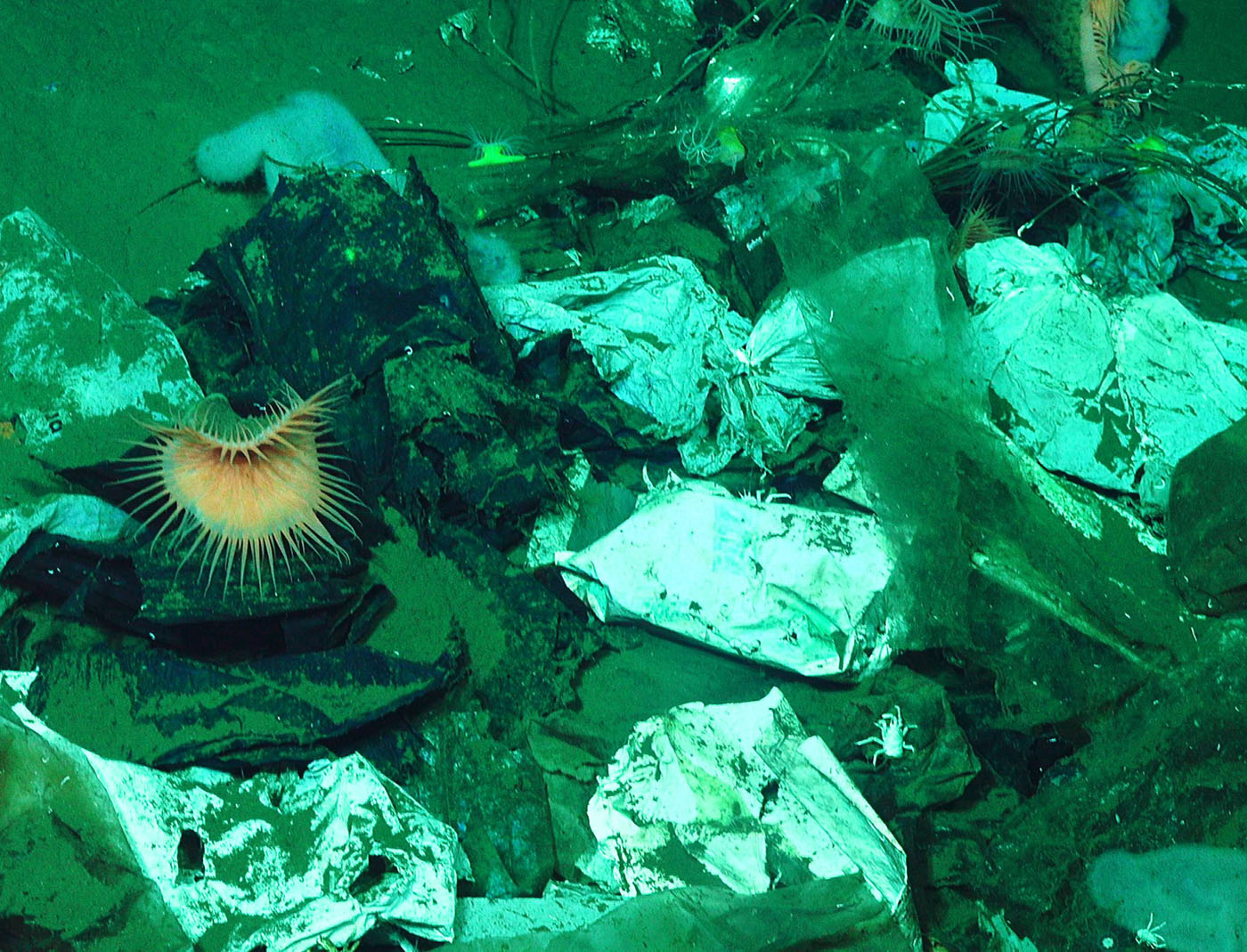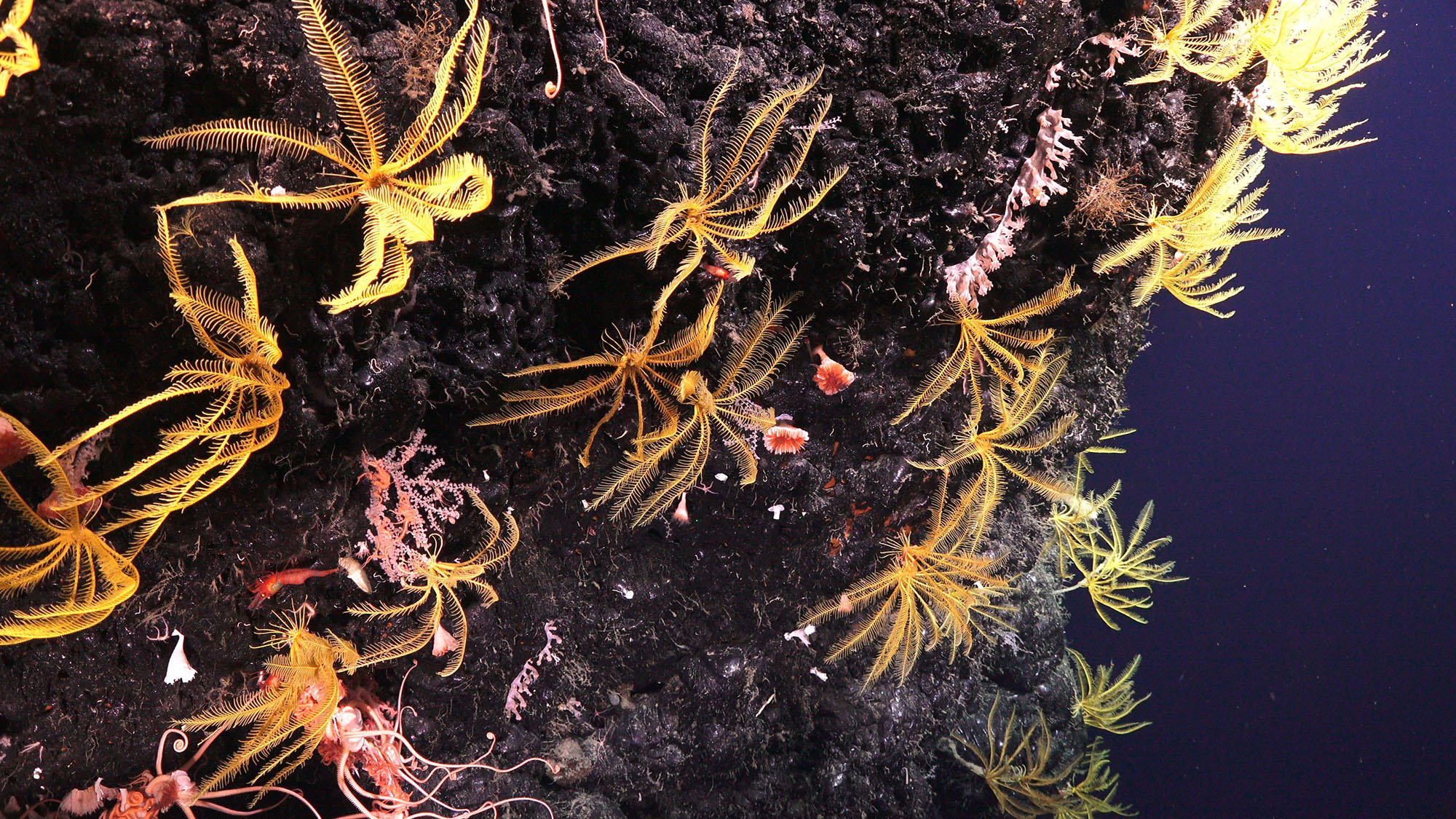“If the deep sea is all one big unit, then you can put a few protected areas wherever convenient and that would take care of it, but if it is, in fact, divided up into a bunch of biogeographic units then it is important to have a protected area in each one.”
— Dr. Les Watling, Principal Investigator, University of Hawaii
Responsible management of the ocean requires an understanding of diverse ecosystems.

RESEARCH FOR OUR FUTURE
Expeditions in 2019 revealed the extreme diversity found in deep-sea mounts in Costa Rica, the Central and Western Pacific, and the waters around Hawaii. The characterization of these systems is critical as they become increasingly targeted by anthropogenic endeavors.
The Vice Minister for the Environment and head of Conservation International in Costa Rica toured Falkor and joined scientists for a discussion about needed protections on local seamounts. As a result of the deep-sea corals found during the Costa Rican Deep expedition, there is evidence that these seamounts provide essential habitat for at least four new species of corals and six other animals that were discovered. Creating a new marine protected area from the mainland to Isla del Coco is one strategy to shelter these ecosystems from impacts of fishing or potential mining activities.
Some of the largest trash aggregations seen by the science party were found at 3,000 meters depth.While unfortunate, the footage is now being used to illuminate the impact of marine trash including an international deep-sea trash campaign showing that just because you cannot see it does not mean it is not there (#CostaRicaDeep).

New understandings of complex deep-sea coral communities along the Emperor Seamount Chain, discovered during the Deep Coral Diversity expedition can contribute to essential protection of deep-sea biodiversity. These findings have implications for determining how many protected areas are needed in deep waters, particularly in this active region left vulnerable due to coral harvesting, deep-sea fishing, and potential mining. The information will also help resource managers in updating policy to protect the different regions of coral (#DeepCoralDiversity).
Additional characterization of seamount communities along Necker Ridge will provide a better understanding of the connection between Pacific deep-sea ecosystems that could soon face impacts from human activity such as cobalt-rich, manganese crust mining. Understanding seamount diversity is critical in predicting effects that mining endeavors would have on ocean ecosystems (#BridgeorBarrier).



